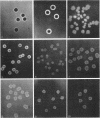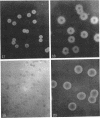Abstract
The morphology, on MacConkey's agar, of colonies of the bacteria commonly found in enteric specimens is sufficiently characteristic and distinctive, when observed with transmitted oblique illumination and a low-power stereoscopic microscope, to enable identification at the generic (and occasionally the species) level with over 97% accuracy. Application of this technique resulted in great savings of time, manipulative steps, and media compared with the usual procedures of diagnostic enteric bacteriology, and there was an increase in sensitivity without sacrificing accuracy.
Full text
PDF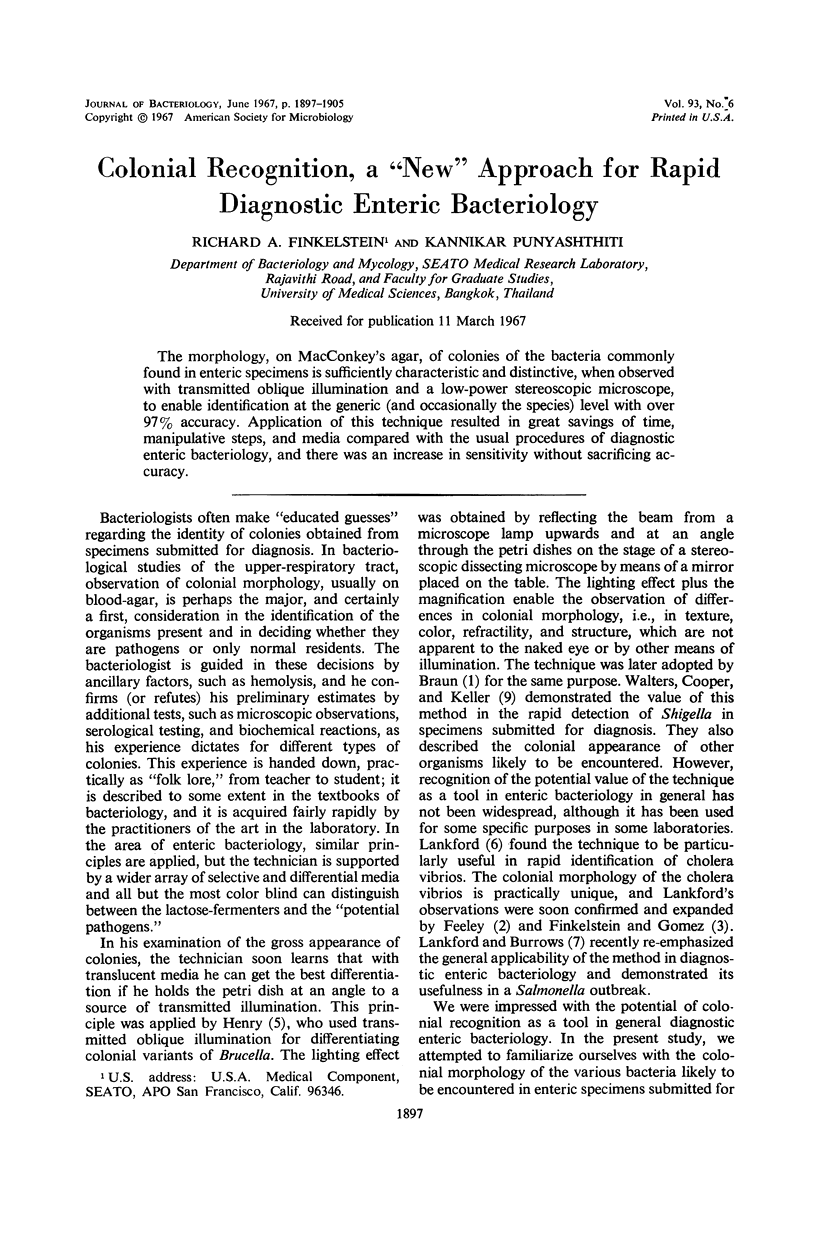
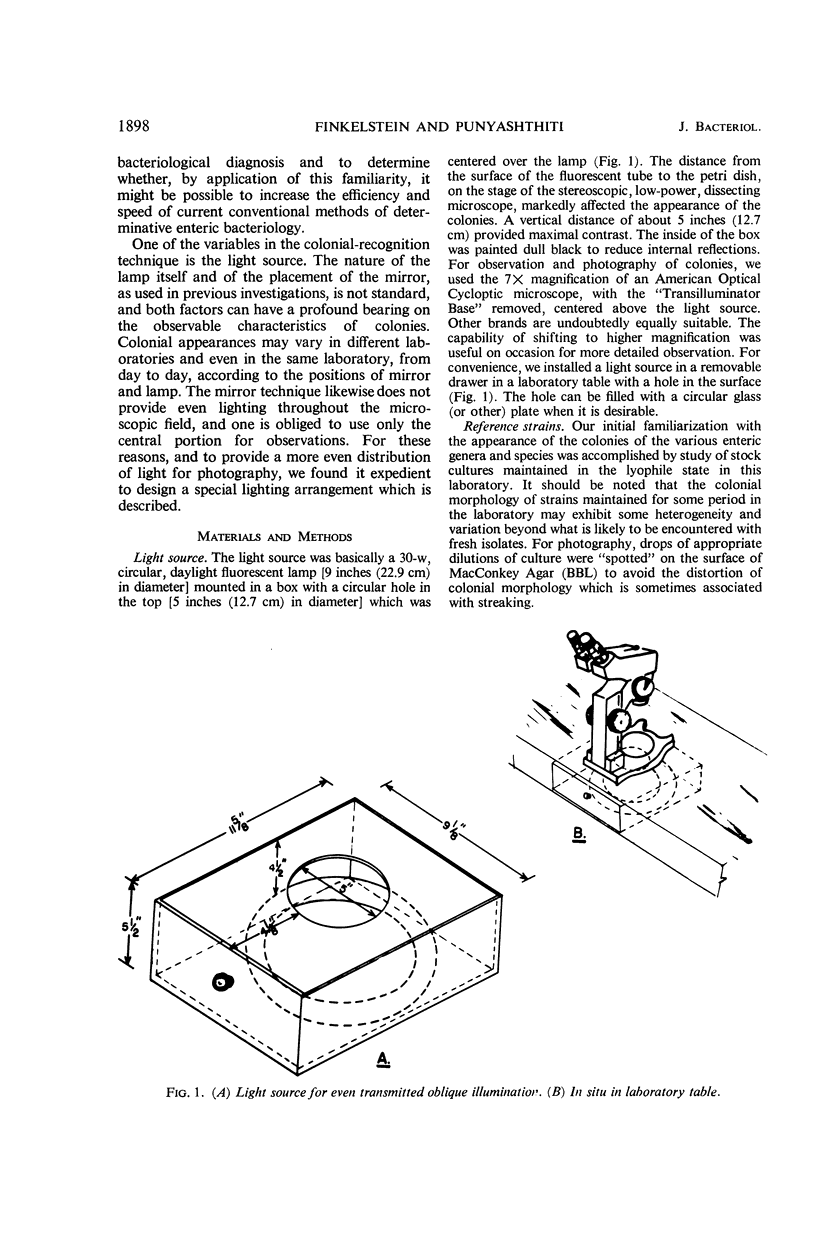
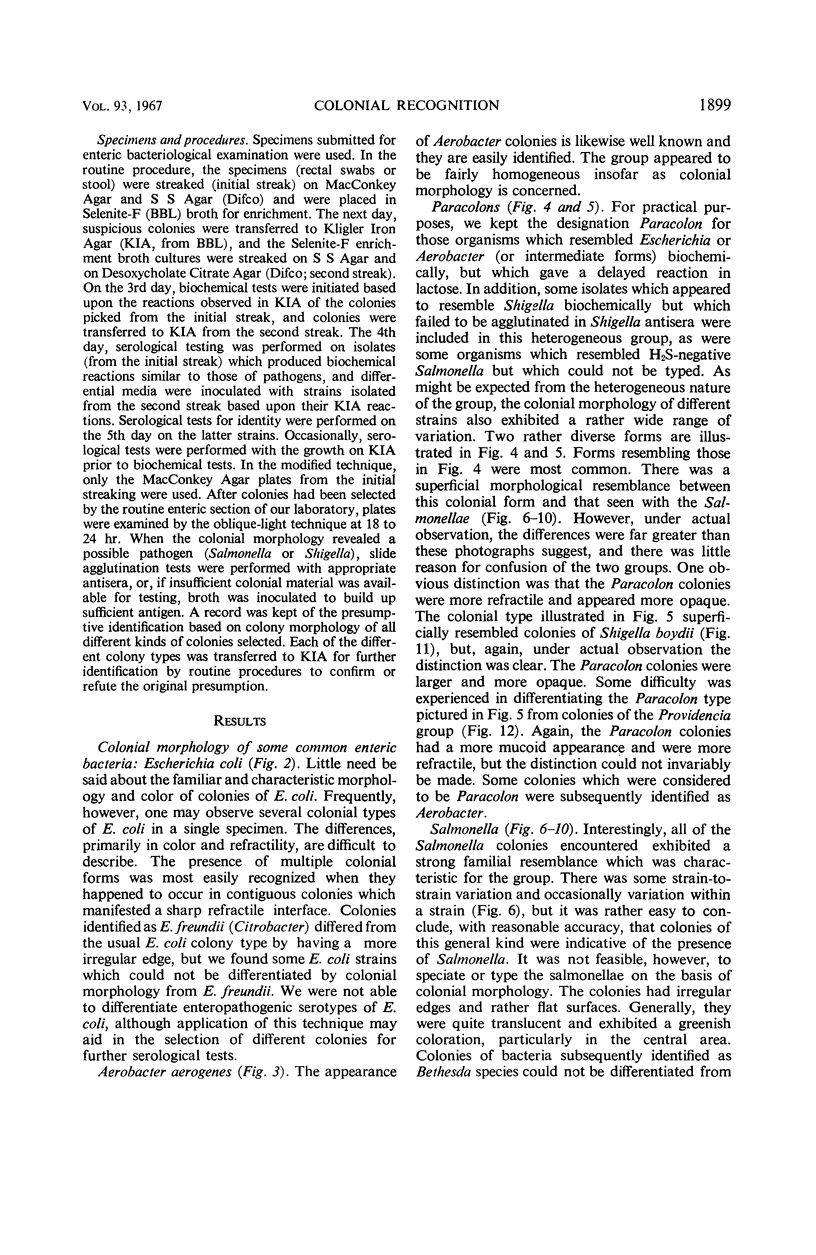
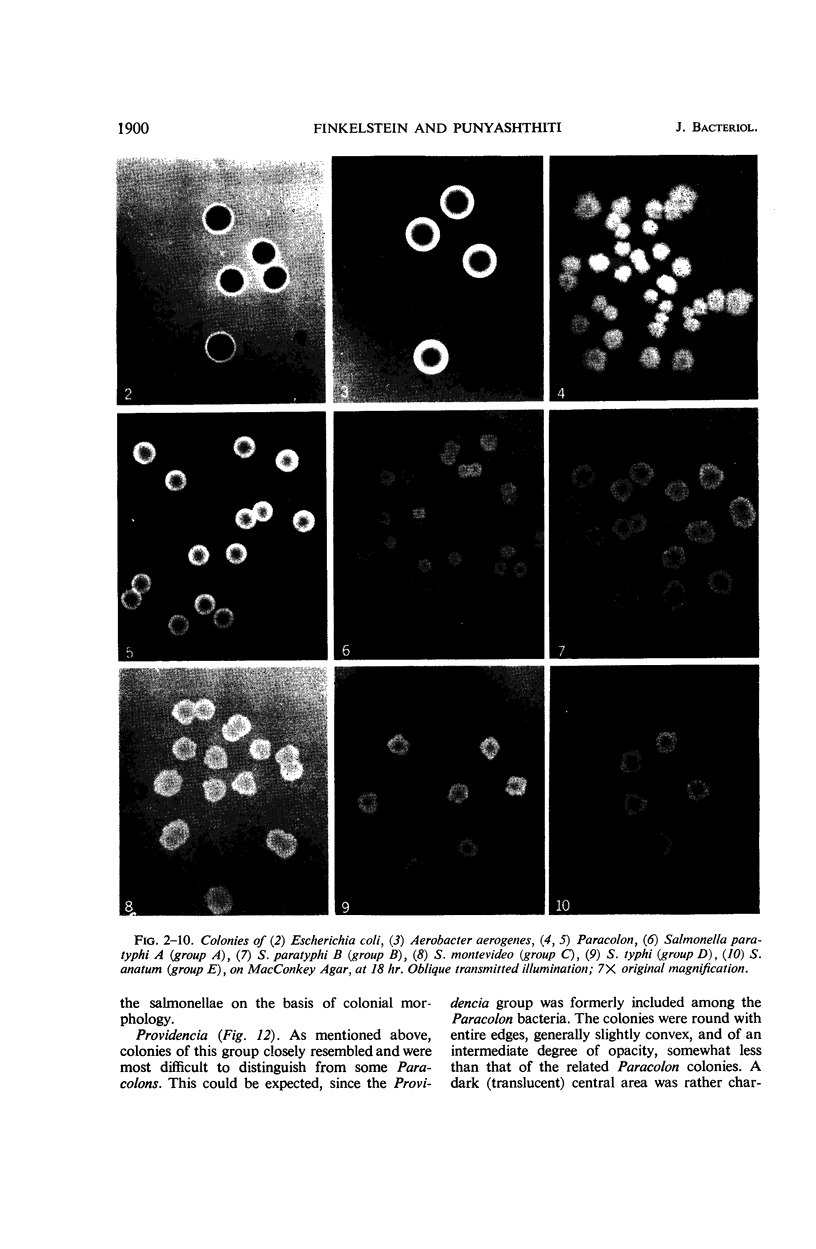
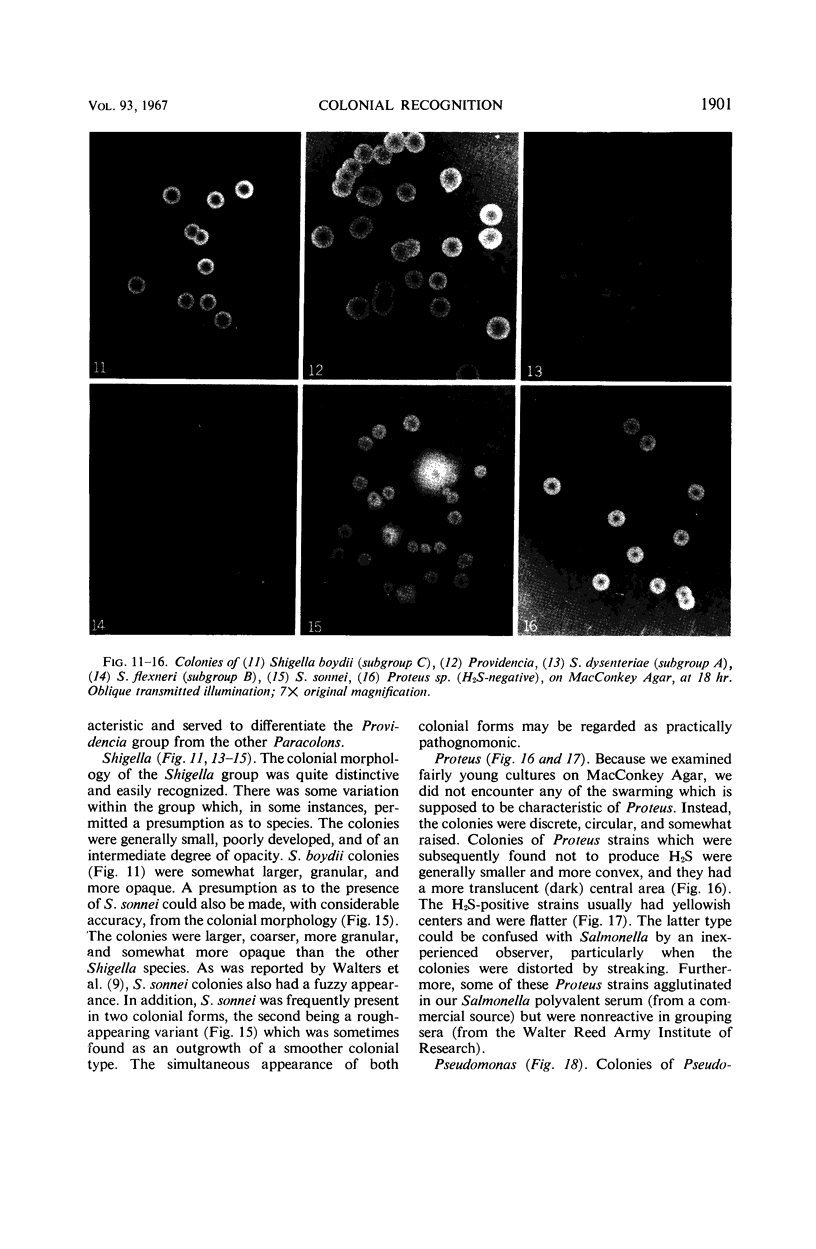
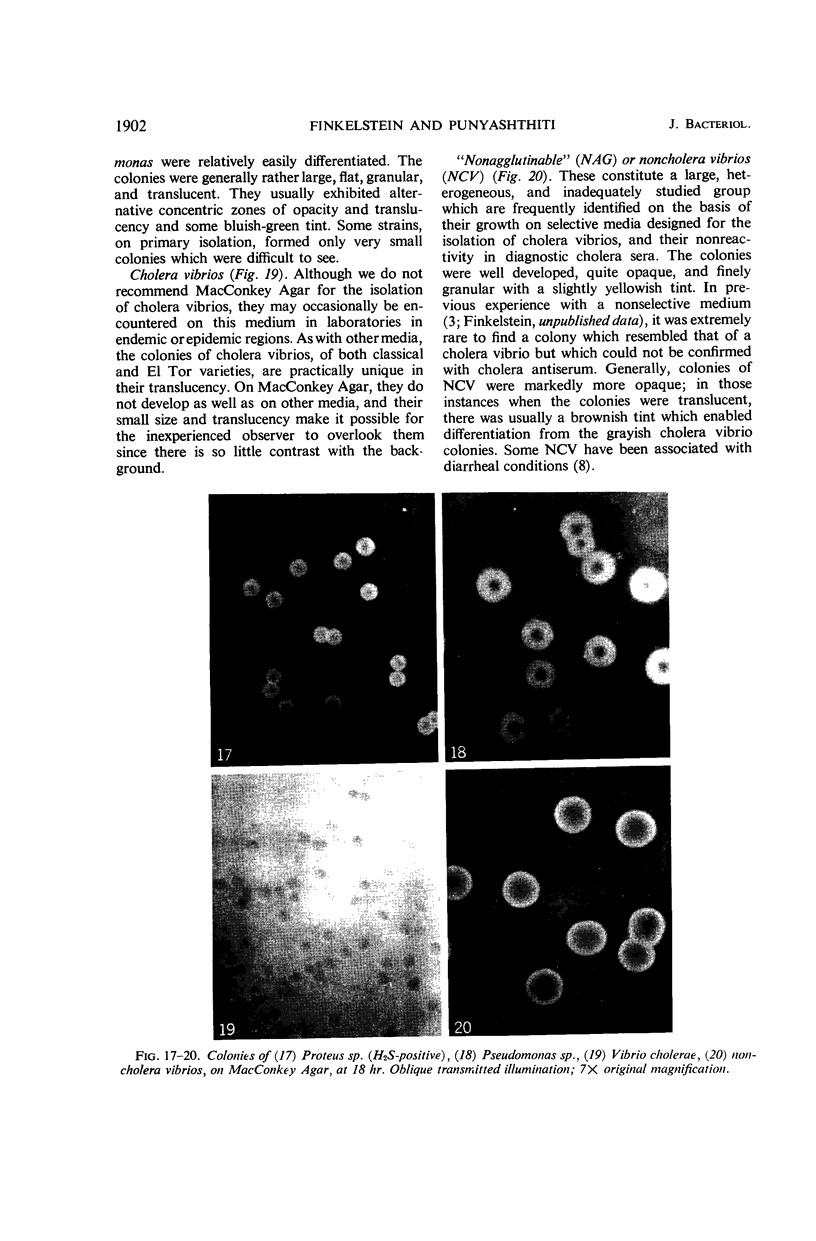
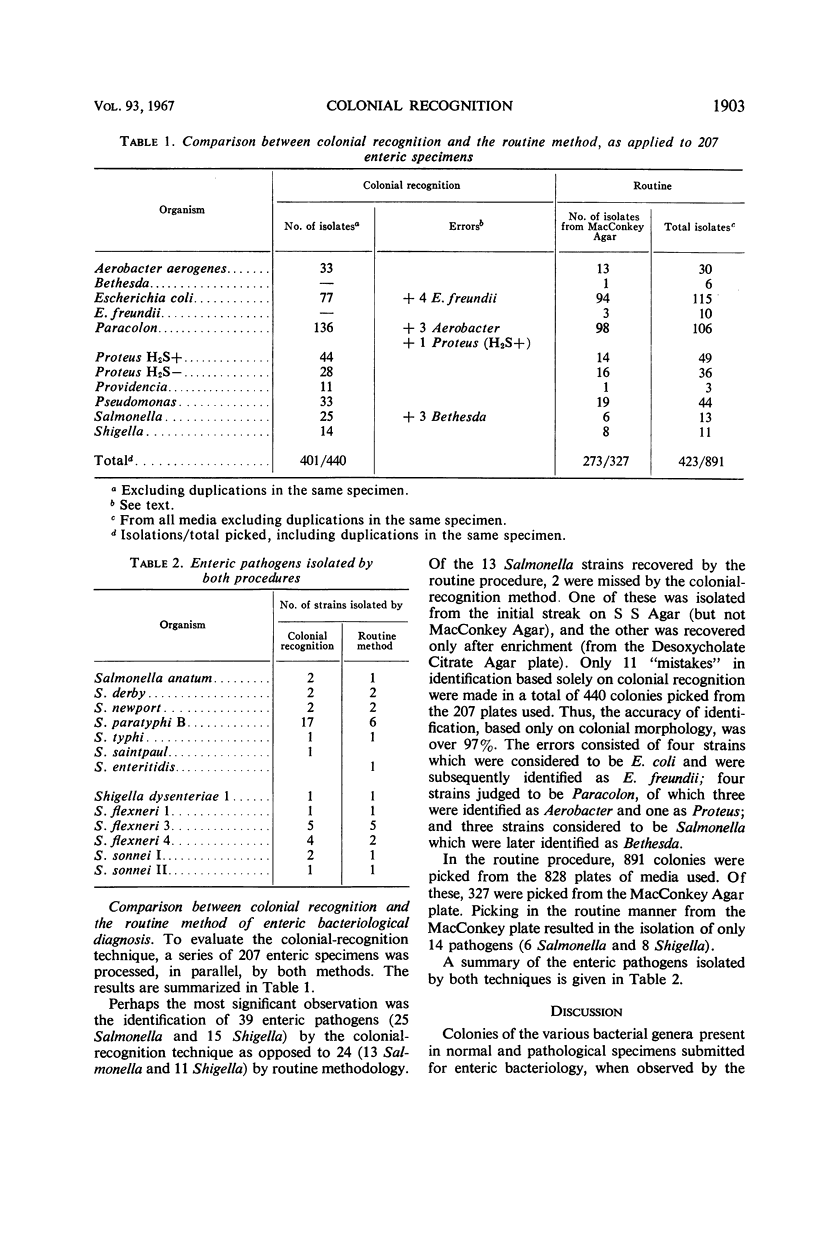
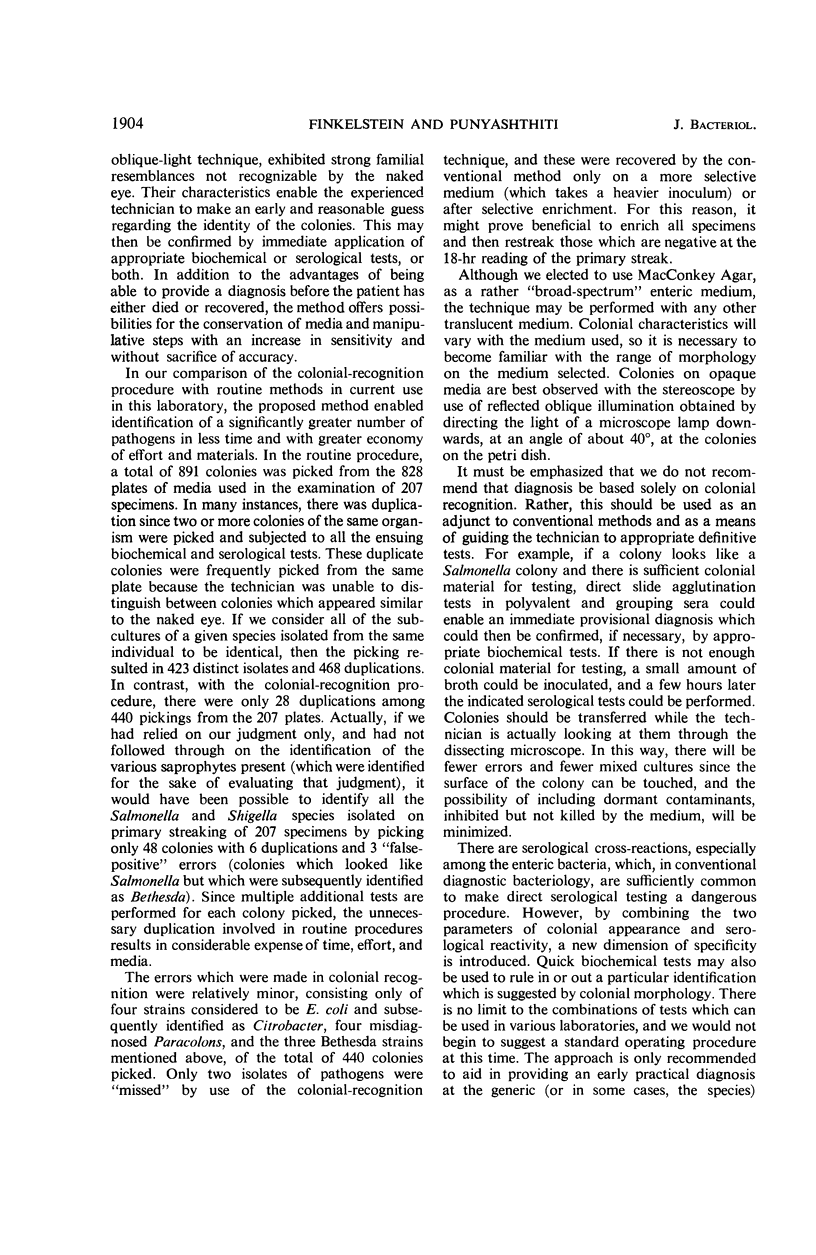

Images in this article
Selected References
These references are in PubMed. This may not be the complete list of references from this article.
- Braun W. Dissociation in Brucella abortus: A Demonstration of the Rôle of Inherent and Environmental Factors in Bacterial Variation. J Bacteriol. 1946 Mar;51(3):327–349. [PMC free article] [PubMed] [Google Scholar]
- FEELEY J. C. Isolation of cholera vibrios by positive-recognition plating procedures. J Bacteriol. 1962 Oct;84:866–867. doi: 10.1128/jb.84.4.866-867.1962. [DOI] [PMC free article] [PubMed] [Google Scholar]
- MCINTYRE O. R., FEELEY J. C., GREENOUGH W. B., 3rd, BENENSON A. S., HASSAN S. I., SAAD A. DIARRHEA CAUSED BY NON-CHOLERA VIBRIOS. Am J Trop Med Hyg. 1965 May;14:412–418. doi: 10.4269/ajtmh.1965.14.412. [DOI] [PubMed] [Google Scholar]



